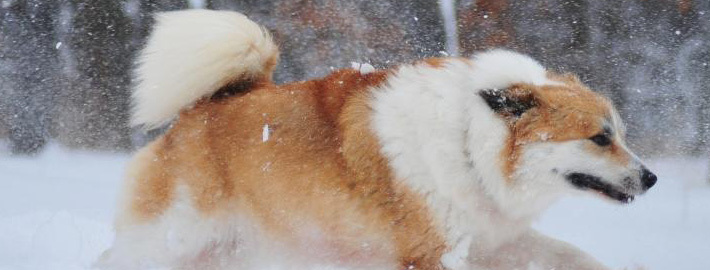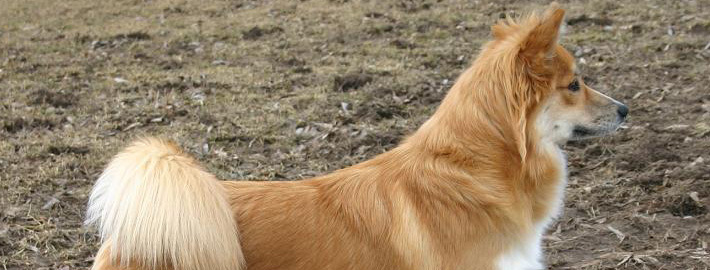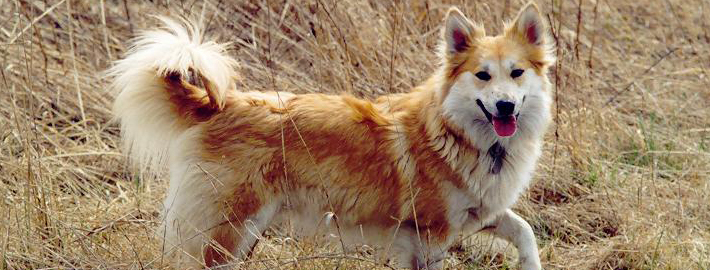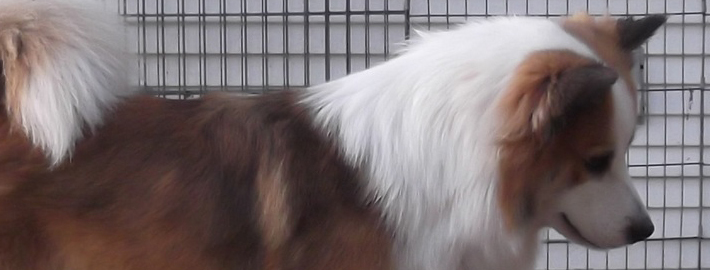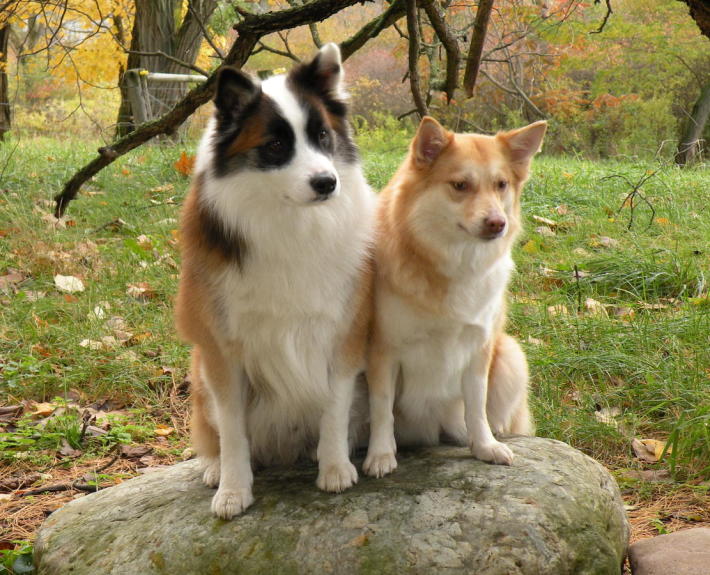What makes the Icelandic Sheepdog Unique?
Icelandic Sheepdogs form deep bonds with family members. They love being helpful, but most of all they love togetherness and family time. Icelandic Sheepdogs get along very well with children.
Breed Groups
Page Contents
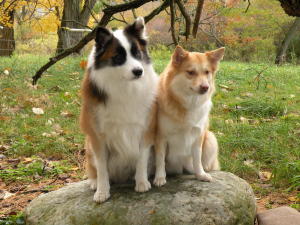
Is the Icelandic Sheepdog Right For You?
The breed is extremely social, loving, and patient with children, making them an ideal family dog. The breed sheds its undercoat twice a year and needs to be brushed when it does. Intelligent and eager to please, Icelandic Sheepdogs are easily trained.
If you are considering purchasing an Icelandic Sheepdog here.
- Herding Group; AKC recognized in 2010.
- Ideal Size: Males – 18″ tall at the shoulder; Females – 16½”
- Cattle, horse and sheep herder.
In 5 Words
- Inquisitive
- Energetic
- Alert
- Agile
- Hardy
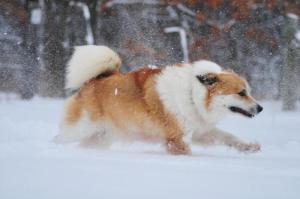
Characteristics
Learn About the Icelandic Sheepdog
Description
General Description
The Icelandic Sheepdog had a large nose and black-pigmented lips. The eyes are medium sized and dark brown. The head is arched with a rather compact muzzle. It has sturdy forelegs and double dewclaws that are similar to those of a Lundehund. The Icelandic Sheepdog is a Nordic herding spitz, slightly under medium sized with prick ears and a curled tail. Seen from the side the dog is rectangular; the length of the body from the point of shoulder to point of buttock is greater than the height at withers. The depth of the chest is equal to the length of the foreleg. The expression is gentle, intelligent and happy. A confident and lively bearing is typical for this dog. There are two types of coat, long and short, both thick and extremely weatherproof. There is a marked difference in appearance between the sexes.
Short History of the Icelandic sheepdog
The Icelandic sheepdog very much resembles dogs found in graves in Denmark and Sweden from about 8000 B.C. Dog imports to Iceland were limited and from 1901 even forbidden.
In 1650 Sir Thomas Brown wrote “To England there are sometimes exported from Iceland … a type of dog resembling a fox … Shepherds in England are eager to acquire them!”
Plague and canine distemper destroyed over 75% of the breed in the late 19th century, leading to a ban on the importation of dogs to Iceland. The purebred Icelandic sheepdog was again bordering extinction in the late 20th century and in 1969 the Icelandic Dog Breeder Association (HRFÍ)[3] was established to preserve the breed, among other aims.
The Icelandic sheepdog gained AKC recognition in June 2010, alongside the Leonberger and the Cane Corso.
Temperament
A hardy breed, the Icelandic Sheepdog is loyal and playful. The breed is intelligent and active and will require moderate activity and plenty of human companionship. The Icelandic Sheepdog’s gentle and happy nature make it an ideal family pet. The Icelandic Sheepdog is a doting companion, fiercely loyal and intensely devoted to its family. Because of the breed’s friendly and social personality, the Icelandic Sheepdog will require much human contact and attention. They do not care for being left alone or left outside unsupervised. An Icelandic Sheepdog that does not enjoy ample human companionship may develop anxiety. As a result of the breeds gentle disposition harshness should also be avoided when providing correction for the Icelandic Sheepdog.
Caring for Your Icelandic Sheepdog
General Health
There are no genetic or common health problems known to be directly linked with this breed. Icelandic sheepdogs are susceptible to certain conditions that affect all dogs, such as:
- Hip dysplasia in Icelandic sheepdogs
- Dog cataracts
- Cryptorchidism
- Distichiasis (inward-growing eyelashes)
- Luxating patella (knee problems)
Annual vet visits will help your pet maintain optimum health and recognize any problems sooner. If you intend to buy an Icelandic sheepdog from a breeder, ask about any health tests given to the parents, and ask to see the parents — or at least the mother — interacting with the puppy. This ensures the dogs have been around each other and raised in a social environment.
.
Grooming & Bathing
The double coat sheds like that of the average dog, but Icelandic sheepdogs shed their undercoat twice per year. Daily brushing is recommended, especially during seasonal heavy shedding.
You should trim the nails (and dewclaws) regularly. The dewclaws do not touch the ground, so they do not naturally become worn.
Clean your dog’s teeth as part of a regular routine, and check the ears for discharge.
Use the grooming time as a way to recognize any changes or problems your dog may have. Because of the breed’s double coat, take care when outdoors in high temperatures, and always have water on hand.
Exercise & Training
This is a very active breed that needs to be exercised every day. This breed needs to be taken on a daily walk or jog. While out on the walk make sure the dog heels beside or behind the person holding the lead, never in front, as instinct tells a dog the leader leads the way, and that leader needs to be the human. In addition, this breed will enjoy sessions of play.

